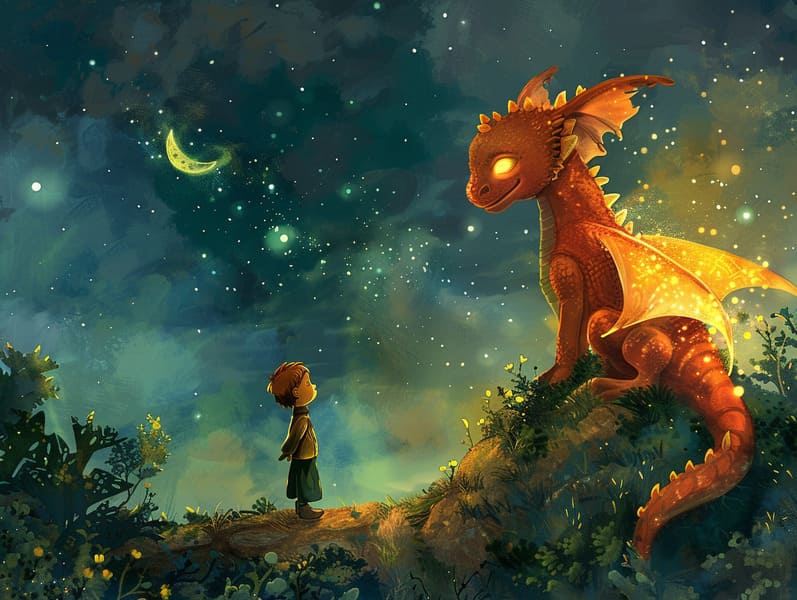The Birth of Fairy Tales to Read and the Lasting Appeal.
The Birth of Fairy Tales to Read and the Lasting Appeal.
Blog Article

Fairy tales have legendary status. These tales have been relayed from one generation to the next ages before they were ever documented. They came from a variety of civilizations, including Asian traditions. They were initially transmitted among adults, often carrying themes and messages aligned with the societal norms and beliefs of the time.
The Grimm brothers, Jacob and Wilhelm, were among the first to compile and publish many of these beloved tales. Their volume, "Grimm's Folk Tales," included tales like "Cinder Maid," "Hansel and Gretel," and "Snow-White and Rose-Red," which have since become pillars in the world of children's fairy tales. Similarly, Hans Christian Andersen's imaginative narratives, such as "The Story of the Little Mermaid," and "The Story of the Ugly Duckling," have won hearts worldwide, ensuring their place in the pantheon of timeless fairy tales.
Though they are old, these tales remain as impactful as ever, especially as bedtime stories for kids. These magical stories are now available in various formats, including richly illustrated books, delightful animations, and digital storybooks.
Their lasting appeal can be connected to several whimsical characteristics:
Important Morals: Ancient fairy tales often teach important moral lessons. Narratives like "The Boy Who Cried Wolf" teach the value of honesty, while "The Story of the Tortoise and the Hare" exemplify the merits of persistence and humbleness. These tales offer kids clear distinctions between ethical and unethical, molding their moral compass in a tender yet important way.
Warmth and Understanding: Old fairy tales frequently portray protagonists facing tests and troubles, encouraging audiences to identify with their struggles and encourage their triumphs. For instance, "The Story of Beauty and the Beast" teaches us the benefit of seeing inner beauty to realize the real person of a person, fostering kindness and appreciation.
Cultural Perception: Many old fairy tales are deeply embedded in the cultural contexts from which they came. Understanding these tales can provide illuminating insights into different backgrounds, advancing a sense of cultural appreciation and perception.
Creativity and Imagination: The supernatural elements in classic fairy tales—enchanted objects—revitalize children’s inventiveness. These fairy tales move readers to enchanted realms, generating innovative thinking and a sense of magic that lasts a lifetime.
Traditional fairy tales are not only delightful but also pedagogical. They serve as delightful tools in cultivating various mind and heart abilities here in children. When ancient fairy tales are narrated, they improve verbal development by bringing new linguistic elements and detailed sentence structures. This practice also enhances hearing abilities and concentration, as the young pay close attention, prepared to see what happens next.
Furthermore, discussing the themes and characters of ancient fairy tales can nurture reasoning skills and analytical skills. Children are taught to find patterns, forecast, and realize cause and effect. These talks also assist young readers say their thoughts and feelings, boosting their emotional intelligence.
In today’s electronic age, the prevalence of free fairy tales online has made these stories more within reach than ever. Digital sites and apps supply comprehensive collections of Grimm's fairy tales that can be enjoyed or listened through anytime, anywhere. Fairy tales recited are particularly well-liked, extending an interactive method for kids to be a part of these mesmerizing stories. Voice books and read-out-loud videos guide characters and settings to life, often enhanced by delightful musical scores and harmonies that elevate the tale journey.
The unending appeal of traditional fairy tales lies in their ability to alter to current eras while keeping hold of their main lessons. Contemporary reinterpretations of these stories often highlight more diverse characters and modern settings, making them relevant to today’s audience. However, the essential messages of gallantry, benevolence, and fairness remain unchanged, continuing to impact listeners of all ages.
Timeless fairy tales also offer a sense of ease and comprehensibility. They deliver up a well-ordered narrative with a unmistakable beginning, middle, and end, often ending with the ending of conflicts and the triumph of goodness over badness. This assuredness can be comforting for kids, yielding a sense of unchangeability in an inconstant world.
Old fairy tales continue to enchant and coach new generations, maintaining their splendor and applicability in modern society. As bedtime stories for kids, they render a perfect blend of allure and teaching, enriching moral values, empathy, and creativity. The prevalence of internet fairy tales and the widespread nature of fairy tales read aloud certify that these old fairy tales remain within reach to new generations.
By safeguarding and communicating these tales, we continue to commemorate the rich tapestry of mythology and cultural heritage. Whether you are experiencing a colorful picture book, enjoying a virtual collection, or listening to an sound book, the splendor of ancient fairy tales is always within reach. These fairy tales convey of the unfading power of stories and its ability to gather us across time and space.
Be it you are accessing a artistically illustrated book, enjoying a web-based library, or hearing an spoken story, the enchantment of old fairy tales is always within reach.
These stories convey of the immortal force of storytelling and its ability to connect us across time and space, creating a bond that charms and informs alike.